Nu-Vue for TWA
Nu-Vue playing cards by Brown & Bigelow have novel courts and a special tint which are promoted as “the modern eye-saving concept in playing cards”
‘Nu-Vue’ playing cards by Brown & Bigelow have novel court card designs and are described on the box as “the modern eye-saving concept in playing cards”. The design was patented in July 1964. This particular deck is a two-joker deck produced with ‘Redi-Slip’® finish and treated with Corobex anti-bacterial compound as a souvenir for TWA (Trans World Airlines, the former American airline company). See: the box→
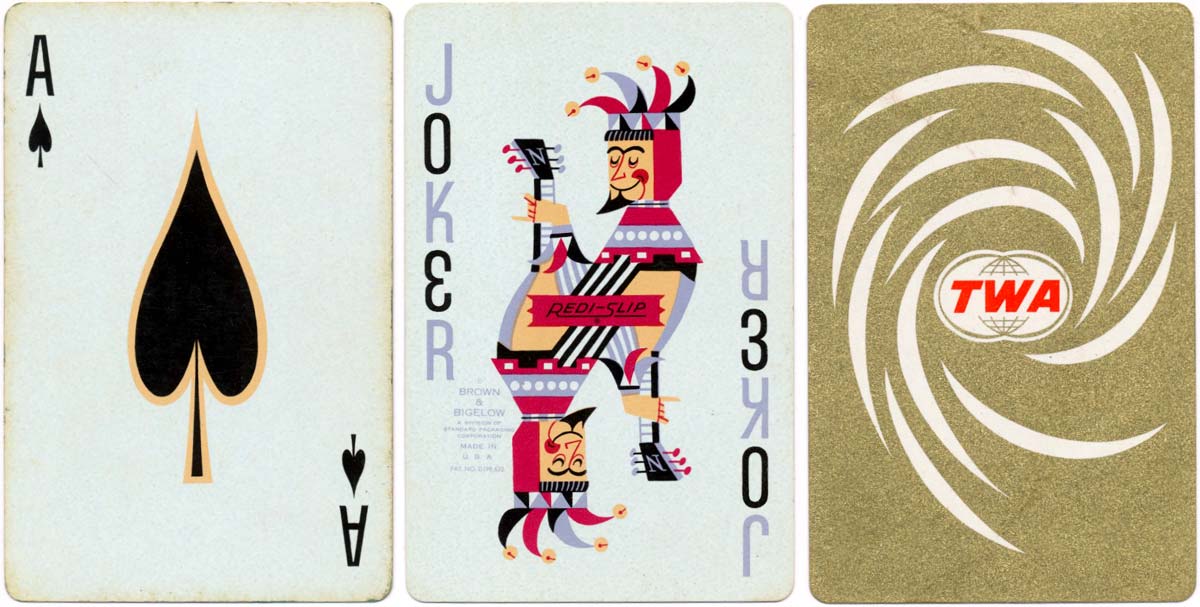

Above: Nu-Vue playing cards for TWA by Brown & Bigelow, mid-1960s. Images courtesy Matt Probert.
Right: Nu-Vue playing cards for Denby Lanes & Lounge by Brown & Bigelow, mid-1960s. Images courtesy Rex Pitts.
NOTE: It is has been found that a green background helps people with dyslexia perceive what is written upon it, thus many dyslexics use pale green paper for printing, or a green filter when using computer monitors, reading books etc. Brown and Bigelow's "Nu-Vue" capitalised on that understanding by introducing a green tint to the cards.
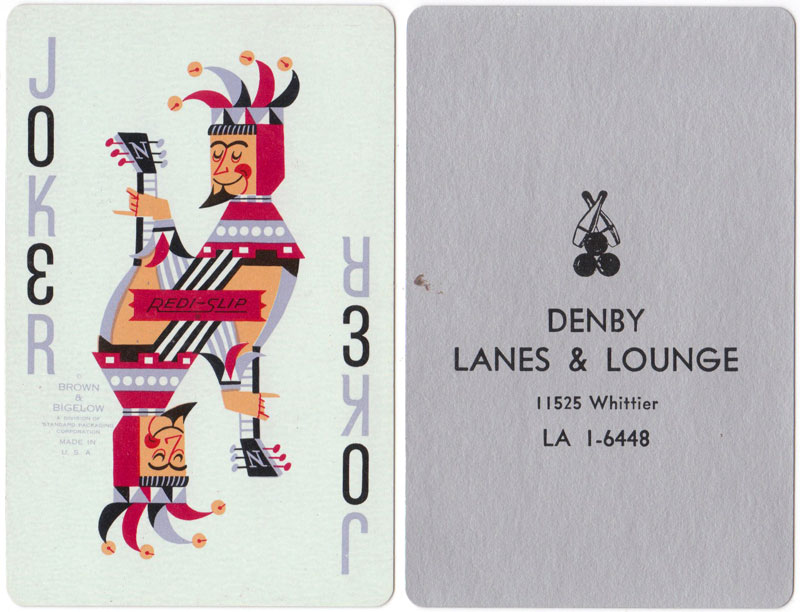
More about ‘Nu-Vue’

Above: from leaflet inside Bridge set, early 1960s. Courtesy Matt Probert.
By Rex Pitts (1940-2021)
United Kingdom • Member since January 30, 2009
Rex's main interest was in card games, because, he said, they were cheap and easy to get hold of in his early days of collecting. He is well known for his extensive knowledge of Pepys games and his book is on the bookshelves of many.
His other interest was non-standard playing cards. He also had collections of sheet music, music CDs, models of London buses, London Transport timetables and maps and other objects that intrigued him.
Rex had a chequered career at school. He was expelled twice, on one occasion for smoking! Despite this he trained as a radio engineer and worked for the BBC in the World Service.
Later he moved into sales and worked for a firm that made all kinds of packaging, a job he enjoyed until his retirement. He became an expert on boxes and would always investigate those that held his cards. He could always recognize a box made for Pepys, which were the same as those of Alf Cooke’s Universal Playing Card Company, who printed the card games. This interest changed into an ability to make and mend boxes, which he did with great dexterity. He loved this kind of handicraft work.
His dexterity of hand and eye soon led to his making card games of his own design. He spent hours and hours carefully cutting them out and colouring them by hand.

Related Articles
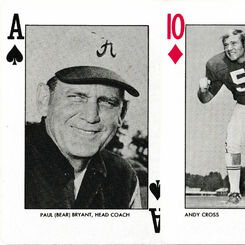
Alabama Crimson Tide 1972
Photos of American football players representing the University of Alabama in 1972.

Lion Coffee
Lion Coffee Mother Goose card game, late 19th C.
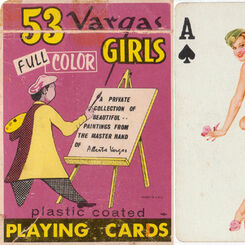
Vargas Girls
‘Vargas Girls’ paintings by Alberto Vargas in a deck of cards published by Creative Playing Card Co ...
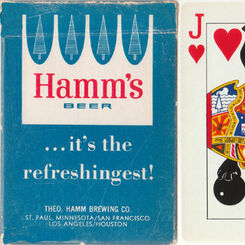
Hamm’s Beer
Hamm’s Beer promotion deck with bear cartoons by Frank M. Antoncich 1968.
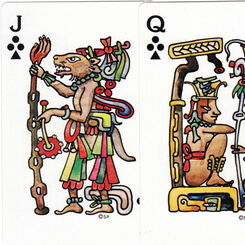
Maya Deck
The Maya Deck produced by Stancraft for Hoyle, 1976.
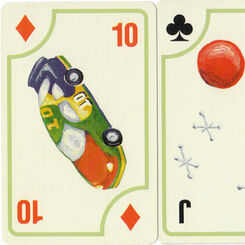
Holiday Games
IE Design Holiday Games, c.1990s.
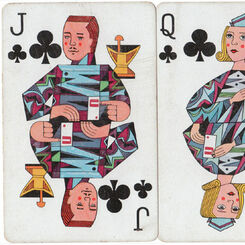
Coricidin Demilets
Coricidin Demilets pharmaceutical playing cards, 1967.
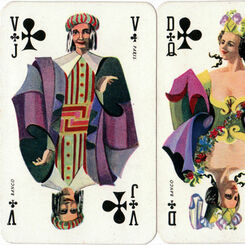
Banco for Air France, c.1952
Banco playing cards for Air France manufactured by Draeger Frères, c.1952.
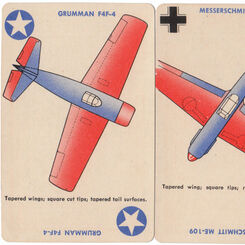
Squadron Scramble
“Squadron Scramble” card games for identifying military planes, Whitman Publishing Co., Racine, Wisc...

Eastern Airlines and Ryder Trucks by Hoyle
Dual advertising deck for Eastern Airlines and Ryder Trucks, produced by Hoyle, 1983.
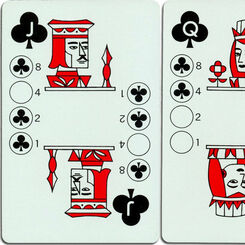
Binary Playing Cards
Promotional deck for Honeywell Computers by Brown & Bigelow c.1968 with the cards marked in binary n...
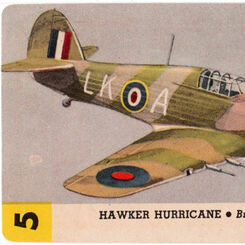
Zoom
“Zoom” Airplane card game published by Whitman Publishing Co., Racine, USA, ©1941.
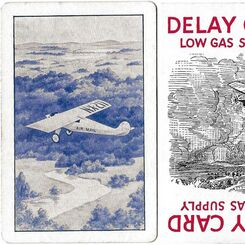
Wings
‘Wings’, the air mail game © 1928 by Parker Brothers Inc.
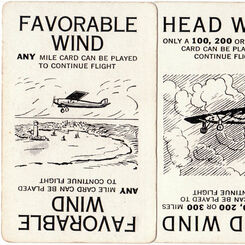
Lindy
‘Lindy’ - the flying game - a sequel to ‘Touring’ by Parker Brothers, 1927.
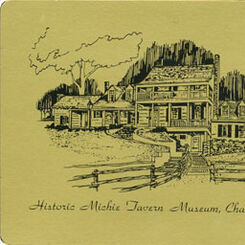
Michie Tavern Museum
Historic Michie Tavern Museum playing cards by Brown & Bigelow.
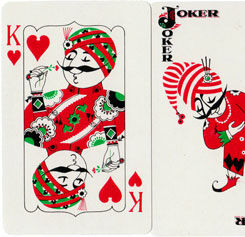
Air India
‘Air India’ playing cards, made in India.

Speelkaarten-Fabriek Nederland “Fortuna”
Speelkaarten-Fabriek Nederland for Royal West Indian Mail Service, c.1926
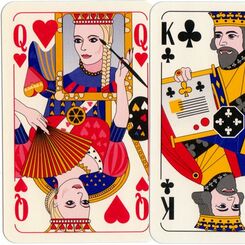
Esveco Specialities B.V.
Alto Imaging Group playing cards manufactured by Esveco Specialities B.V., c.1990s
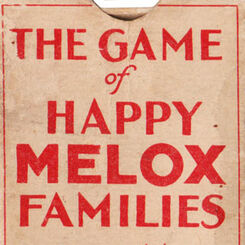
Happy Melox Families
The “Game of Happy Melox Families” was published by G. Clarke & Son of Thomas Street, London, in 192...
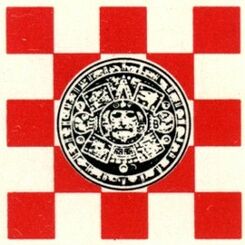
Nutrimientos Purina
Nutrimientos Purina (Purina pet foods) advertising playing cards produced by Miguel Galas S.A. (Brow...
Most Popular
Our top articles from the past 60 days






















